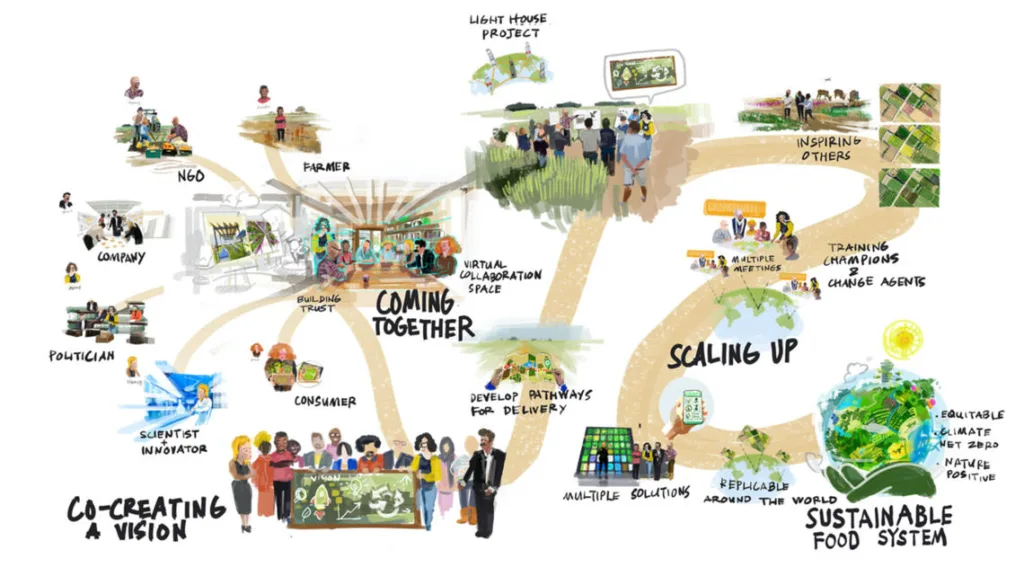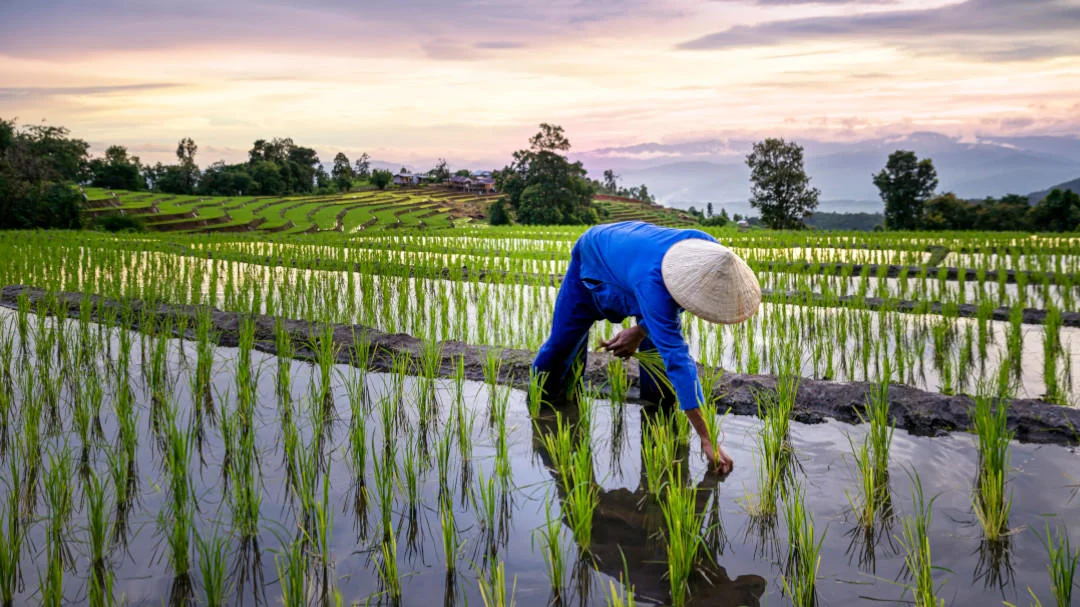London, 26 March 2024 – The agrifood sector must play a crucial role in keeping 1.5C within reach by urgently cutting greenhouse gas emissions and scaling up nature protection solutions through their value chains, according to a series of reports launching today from the Food and Land Use Coalition, WBCSD and We Mean Business Coalition.
The Future Fit Food and Agriculture report series argues for the adoption of ambitious action plans by agrifood companies and sector-wide investments of up to USD $205 billion per year between 2025 and 2030 to unlock up to 9 gigatons of CO2 equivalent of mitigation annually by 2030. The first report aims to help agrifood companies understand the implications of current and emerging voluntary standards and the expected trajectory of regulation for climate and nature. The second report unpacks the financial costs and benefits of implementing mitigation solutions to tackle agriculture and land-use change emissions in company value chains.
The case for urgent action is clear: agricultural production emissions must decrease ~30% by 2030 to align with the Paris Agreement’s goal to limit global warming to 1.5°C by 2050.
The climate strategies of most food and agriculture companies, from input providers and food producers, through to traders and multinational companies, are not comprehensive or ambitious enough. According to the World Benchmarking Alliance, of the 350 most influential food and agriculture companies, only about half have so far disclosed Scope 3 commitments.
In light of these challenges, policymakers are increasingly mandating action on climate and nature from companies, using voluntary standards as the basis for new sustainability legislation.
Morgan Gillespy, Executive Director, Food and Land Use Coalition, commented:
Food and agriculture companies are facing a choice. Those striving to deliver ambitious sustainability strategies today, in close collaboration with farmers in their supply chain, will likely enjoy lower costs, stronger returns and greater agility in the face of advancing sustainability regulation. Those that stall won’t just fail to deliver on climate and nature commitments, they will face higher costs and higher supply chain risks in the long term.
Agricultural production and land-use change emissions in company value chains account for nearly half of total food systems emissions (an estimated 10 gigatons of carbon dioxide equivalent of a total 21 GtCO2e in 2030).
Analysis from the Future Fit Food and Agriculture reports series estimates that, to mitigate up to 90% of their annual agricultural and land-use change emissions by 2030, food and agriculture companies should expect sector-wide costs of approximately USD $205 billion per year (2025-2030).
While significant, such investments are manageable for the sector as a whole and have associated co-benefits:
- USD $205billion per year represents less than 2% of the sector’s projected USD $13 trillion average annual revenues for 2025-2030.
- One-fifth of the USD $205 billion per year are investments in new and growing markets. These investments, estimated to be USD $40 billion per year (average annual from 2025-2030), could lead to potential additional returns of up to USD $190 billion per year by 2030.
- Some on-farm solutions provide savings and/or increased yields worth up to USD $30 billion per year.
- Other associated co-benefits include increased supply-chain resilience and delivery on other sustainability commitments, such as nature targets;
The burden of implementing mitigation solutions should be shared equitably across value chains. In general, the more upstream a value chain participant is, the lower its margins tend to be — farmers in particular tend to have the lowest margins of any value chain participants. It follows that companies across the value chain must work together to determine transition economics and arrive at a transparent, fair and equitable distribution of costs and benefits. They also stand to benefit from making more unified policy asks to government on what it can do to alleviate the costs for all and enable acceleration.
The second Future Fit Food and Agriculture report shows that the costs for mitigation, as a percentage of revenues, change very significantly depending on where actors sit along the value chain. The report shares three examples to illustrate this point, including the case of a Brazilian beef farmer, for whom mitigating 30% of their Scope 1 emissions could cost as much as 17% of their revenues – an unrealistic expectation given farmers typically achieve profit margins of less than 20%.
Overcoming inequity requires food and agriculture companies to reassess how they partner with other actors in the value chain, particularly farmers, and how they engage with policymakers to incentivize and accelerate action. Some companies are already leading the way on this, with several working together through the likes of WBCSD to identify where they can problem solve collectively, raise ambition levels, drive harmonization, and accelerate the implementation of critical solutions.
Diane Holdorf, Executive Vice President, WBCSD, said:
Food system transformation is a central solution to climate change and agrifood companies have a critical role to play. To meet net-zero targets, businesses must take concerted and ambitious action to de-risk the transition for producers and ensure the costs and benefits of mitigation are shared equitably across the value chain.
Through the Agriculture & Food pathway, WBCSD enables members to accelerate accountability for climate and nature impacts in order take meaningful action in value chains and landscapes and influence and leverage the enabling environment. For example:
- WBCSD scope 3 land-based emissions workstream supports companies to accelerate emissions reductions and removals associated with land-use, building on opportunities identified in the scope 3 action agenda for agri-food.
- WBCSD Nature Positive Roadmap provides ‘how to’ guidance to support corporate nature positive strategy development, implementation and disclosure.
- WBCSD is convening 50 members and 27 partner organizations, impacting 1100+ businesses in total – to drive convergence on holistic, outcome-based regenerative agriculture metrics.
To coincide with the Future Fit Food and Agriculture reports, WBCSD has published The Business Case for scope 3 GHG action in agriculture & food value chains which provides perspectives and case studies of different value chain actors regarding the financial costs and benefits. Based on workshops with WBCSD members, this summary report showcases the business case for individual companies in the sector to take action to decarbonize in line with the Paris Agreement and the importance of collaborative action to mobilize finance to implement scope 3 activities.
Related
Content

Forest-positive agriculture for sustainable soy production in Brazil: Interview with IPAM
27 September, 2023

An exciting future for positive agriculture at a global scale
24 January, 2022

Investing in soil health to help transform food and agriculture systems
6 December, 2021

